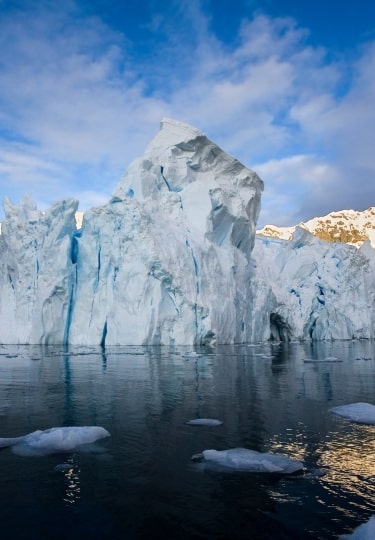Do you dream of exploring the White Continent? Of gazing at incredible icebergs, marveling at whale sightings, and observing seals and penguins in the wild? Or simply taking in the impossibly deep blue skies and snow-draped mountain ranges? Here are a few reasons why you should visit Antarctica.
Visiting Antarctica is a One-of-a-Kind Experience
To visit Antarctica is to undergo a life-changing experience. Only when you get there do you take in the sensation of being at the very end of the world, on a vast continent with no permanent human habitation—just wildlife, mountains, rock, and ice.
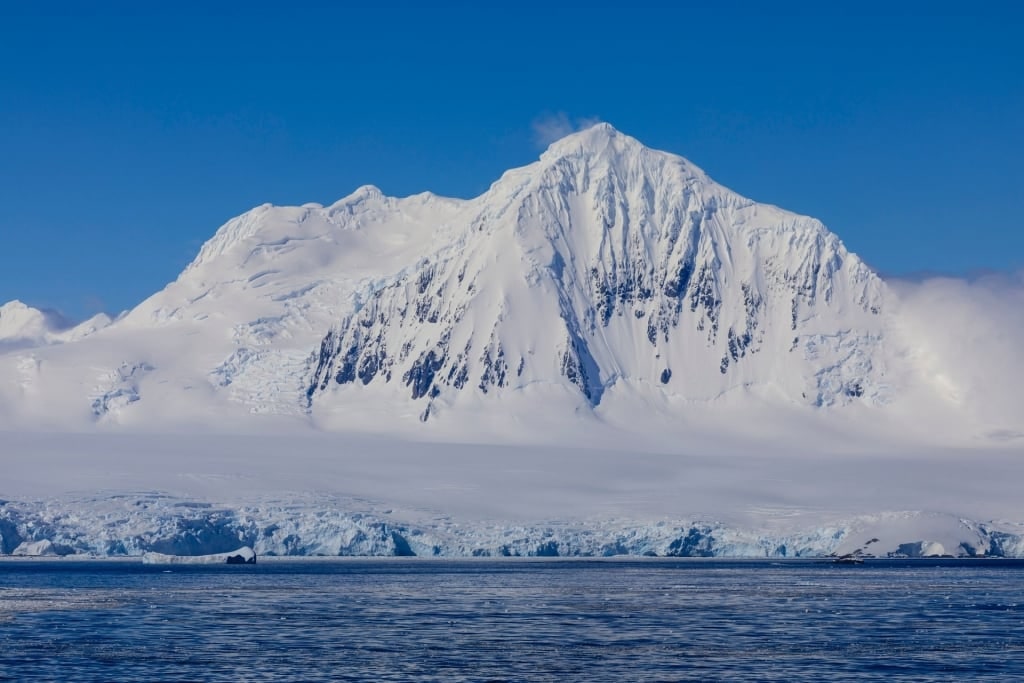
Anvers Island
The landscapes are extraordinary, particularly the snowy peaks of Mount Parry on Anvers Island, which is over 8,000 feet tall, and Mount William, a pyramid of snow and ice rising from a tumbled tidewater glacier, the white of the ice wall striated with blue.
The intense connection with nature is more ethereal here, from the reflection of a peak in a mirror-calm bay to the pink glow of the Austral sunset and the moonlight falling on the gently crackling pancake ice that forms as the surface of the sea freezes.
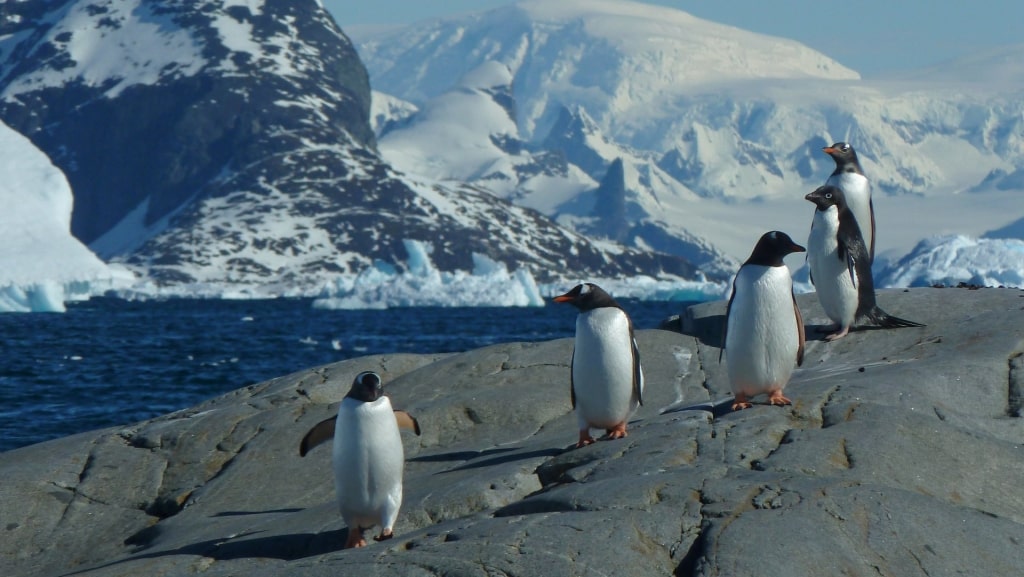
Paradise Bay
Then there’s the wildlife in Antarctica. Witness thousands of fluffy penguin chicks, the blow of a whale, and a seal pup nestled against its mother. Stop, listen, and take in the barking of the seals, the squawking of the penguins, the visceral rumble of a calving glacier, and the whistle of the wind.
Finally, the mere knowledge that all this life is thriving in such extreme circumstances is enough to make you stop and reflect.
Antarctica is Extreme
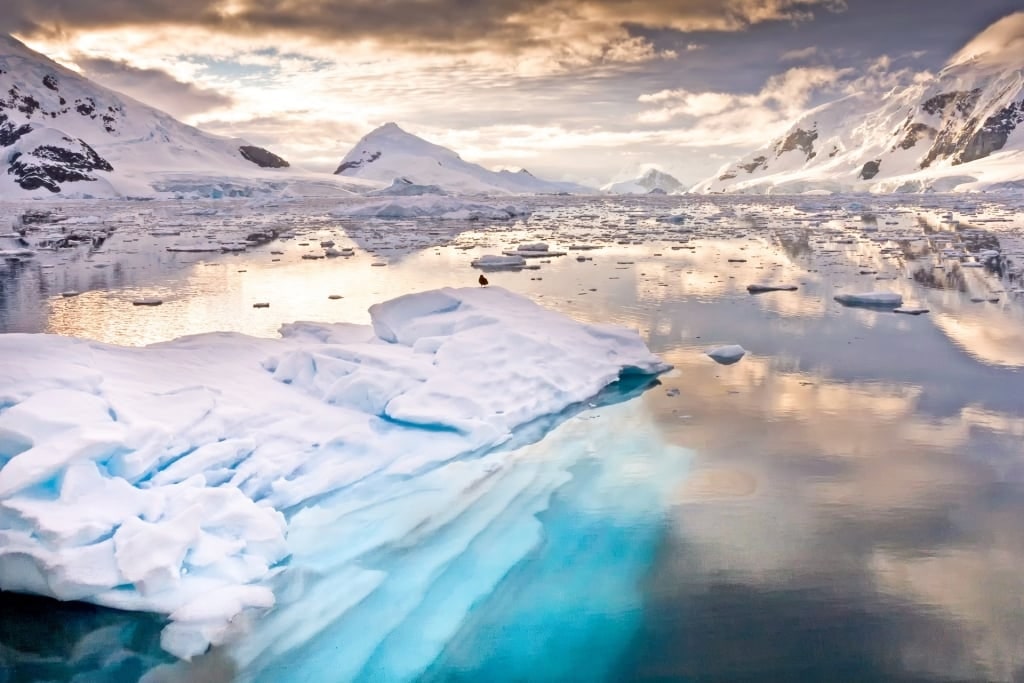
Paradise Bay
The White Continent is the coldest, driest, iciest, and windiest place on the planet. Technically, it’s a desert, with just 6.5 inches of precipitation every year. Coming here is an adventure, regardless of the level of comfort in which you travel.
It’s exciting, challenging, and life-affirming. A few research stations and abandoned huts aside, there are no human settlements. The sense of aloneness is like nowhere else.
The Cold Makes You Feel Alive
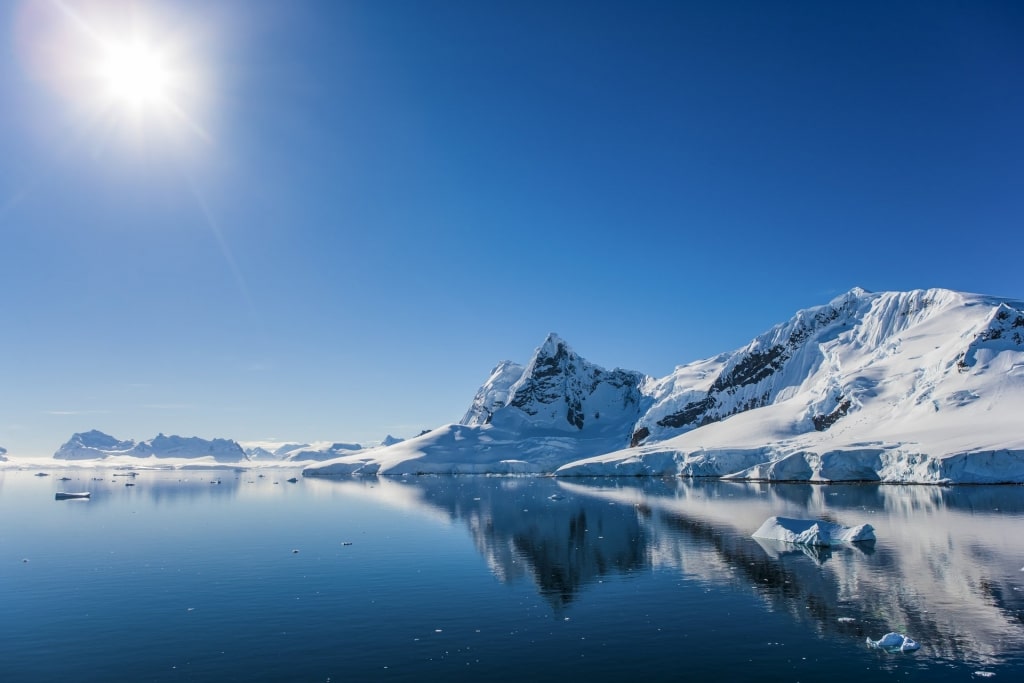
Paradise Bay
The cold of Antarctica is invigorating. The air is so clear and pure that everything seems enhanced—colors, shapes, senses. Pristine, snow-covered slopes sparkle as if they’re sprinkled with jewels. Provided you’re dressed properly, in thermal layers and a wind-proof jacket, the Antarctic climate should make you feel more alert, more energetic, and more alive.
Remember, Antarctica is a desert, so this is dry cold, not the damp kind that chills you to the bone. And despite the cold, you’ll need to pack strong sunscreen and chapstick as the UV light is strong here. Wrap up warm—and embrace it.
The Icebergs Are the Size of Cathedrals
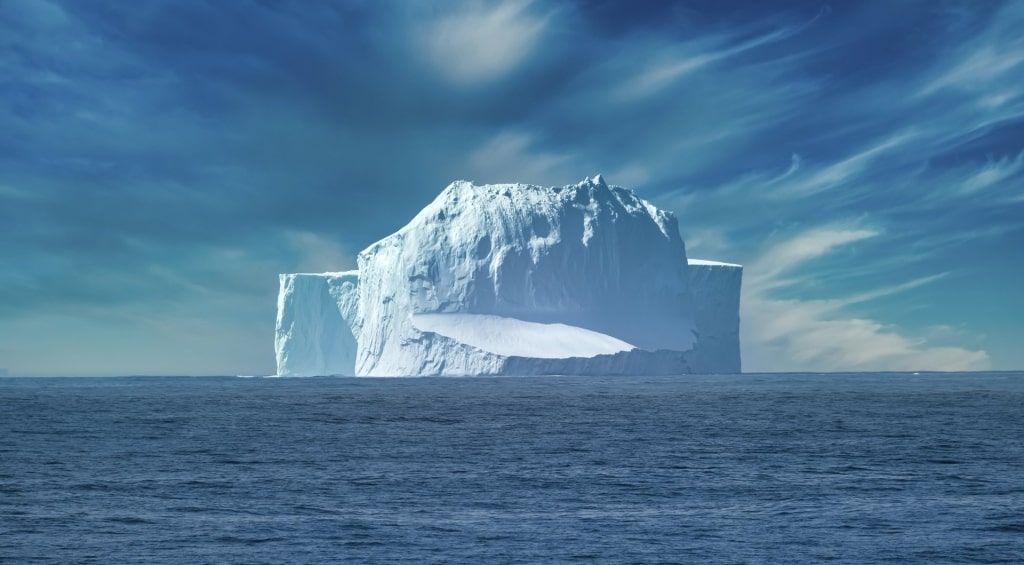
Drake Passage
The first sighting of ice as you cross the Drake Passage is like a mirage: colossal, blue-white bergs, shimmering on the horizon, some flat, some spiked, others forming towering crystal archways. The thrill of approaching the first one is intense; a sign that you’ve almost made it to the Antarctic Peninsula at the very end of the Earth.
Look closely at the icebergs as you pass; it’s not uncommon to find a small colony of penguins hitching a ride. As you near the tip of the Antarctic Peninsula and you’re surrounded by ice, you’ll learn to identify the shapes.
Vast tabular icebergs have steep sides and a flat top. Some have a spire in the middle like a witch’s hat, or a minaret, while others are domed like mushrooms, eroded at the waterline, the shallower water over the ice mass below the surface a brilliant aquamarine.
The colors are extraordinary. Deep sapphire veins run through the pristine white where the ice is more compressed. And no two icebergs are the same.
Spot Extraordinary Birds
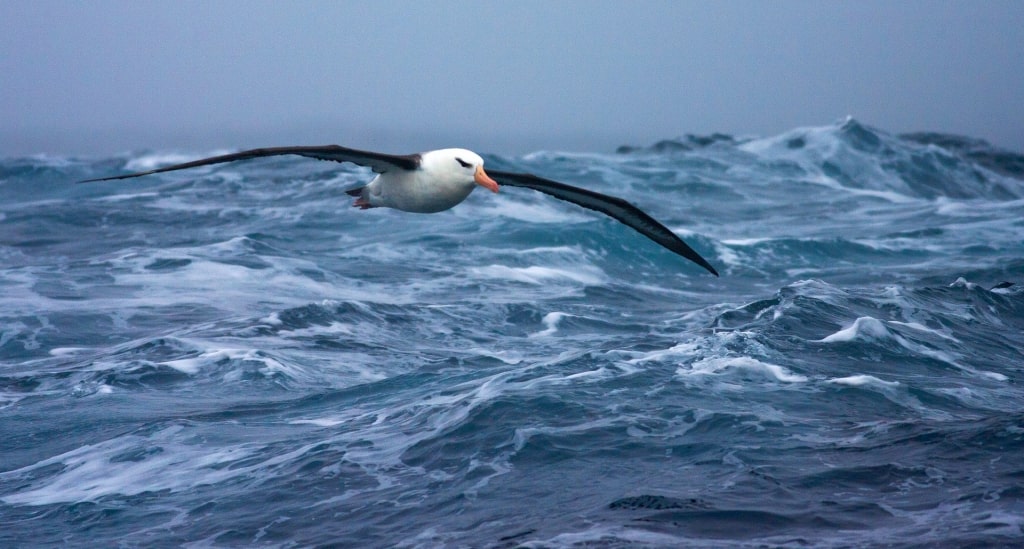
Black-browed albatross
One of the great prizes of a voyage to Antarctica is to spot the magnificent wandering albatross, a graceful white bird with black-tipped wings. This albatross is a finely tuned machine. It has an 11-foot wingspan, the largest in the world.
On a single 10- to 20-day fishing trip, it can cover 6,000 miles while expending less energy than it would sitting on its nest. You’ll see them gliding low over the water and dipping over the waves, sometimes diving for fish; it’s a mesmerizing sight.
Other birds to spot are the black-browed albatross, petrels, shearwaters, and fulmars, which fish for krill in flocks. Where you see them feeding on krill, there may be whales, too.
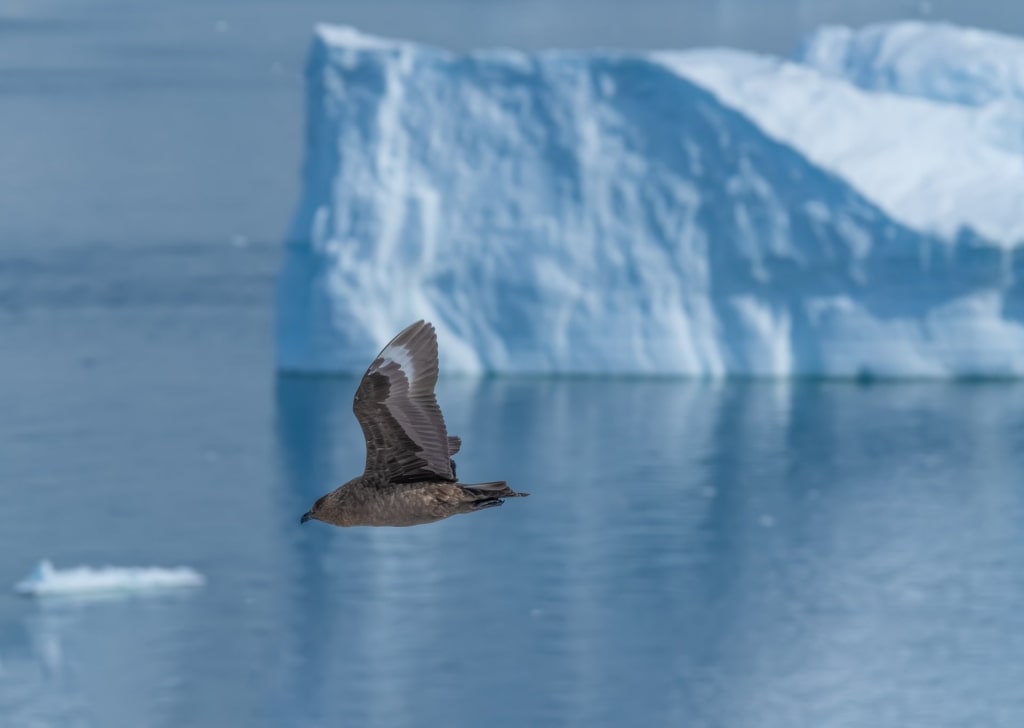
Skua
You’ll spot glossy, black cormorants and skuas, the pirates of the skies. A skua will often engage in an aerial battle with another bird to steal its catch. Remember to pack a good pair of binoculars to watch the show.
See Penguins in the Wild
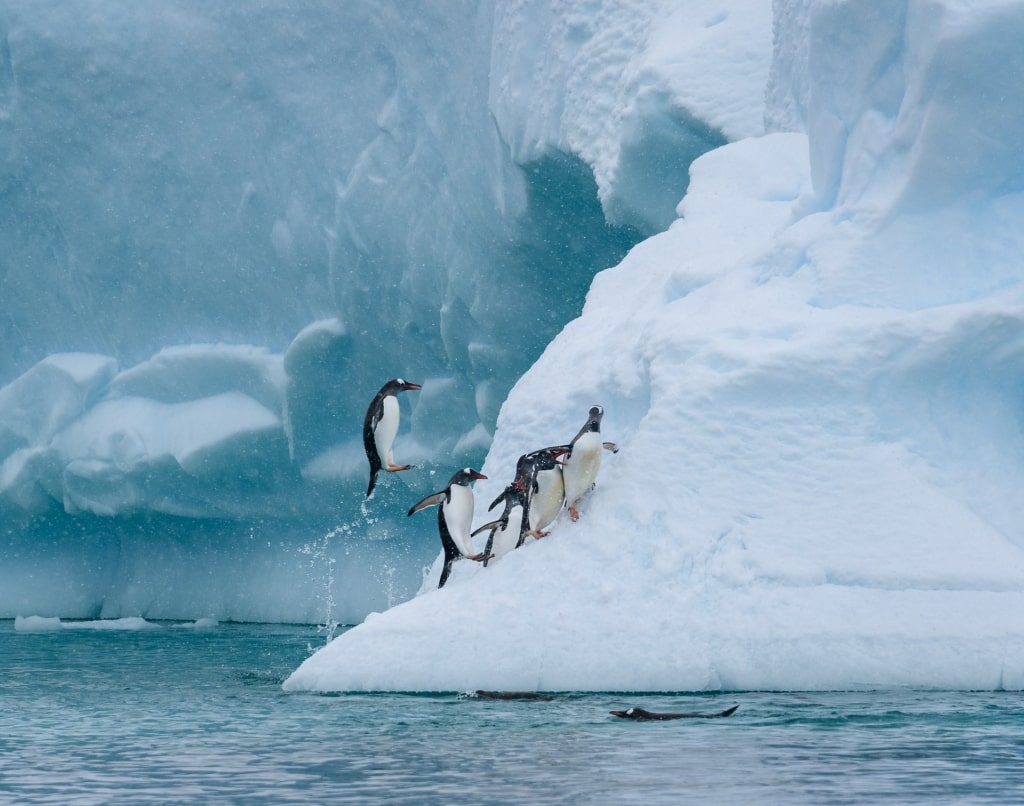
Gentoo penguins
Antarctica is incredibly rich in wildlife, which is all the more surprising given its harsh conditions. Penguins are one of the most successful species here. You’ll see gentoo, Adélie, and chinstrap penguins and will soon realize how active these little birds are, bustling around, building nests, squabbling, sliding on their bellies on the snow, and diving from the ice into the water to swim like torpedoes as they fish.
Admire Various Species of Seals
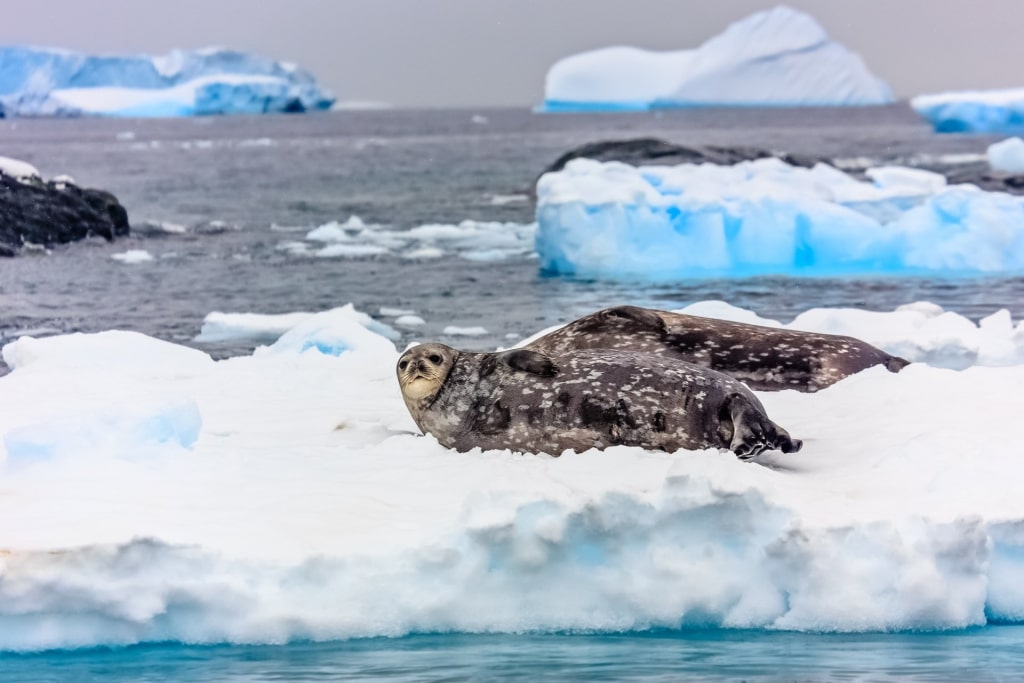
Weddell seal
Seals, with no natural predators here apart from one of their own, the ferocious leopard seal, have little fear. You’ll see Weddell, fur, and crabeater seals in harems flopped on the ice. During the breeding season, Weddell seals can congregate in colonies of up to 200. Pups are born in November, so you should spot quite a few if you visit around that time.
Anything that looks like a hulking black boulder from the distance could be a bull southern elephant seal, distinguished by their great bulk—up to 20 feet from nose to tail—and their trunk-like snout.
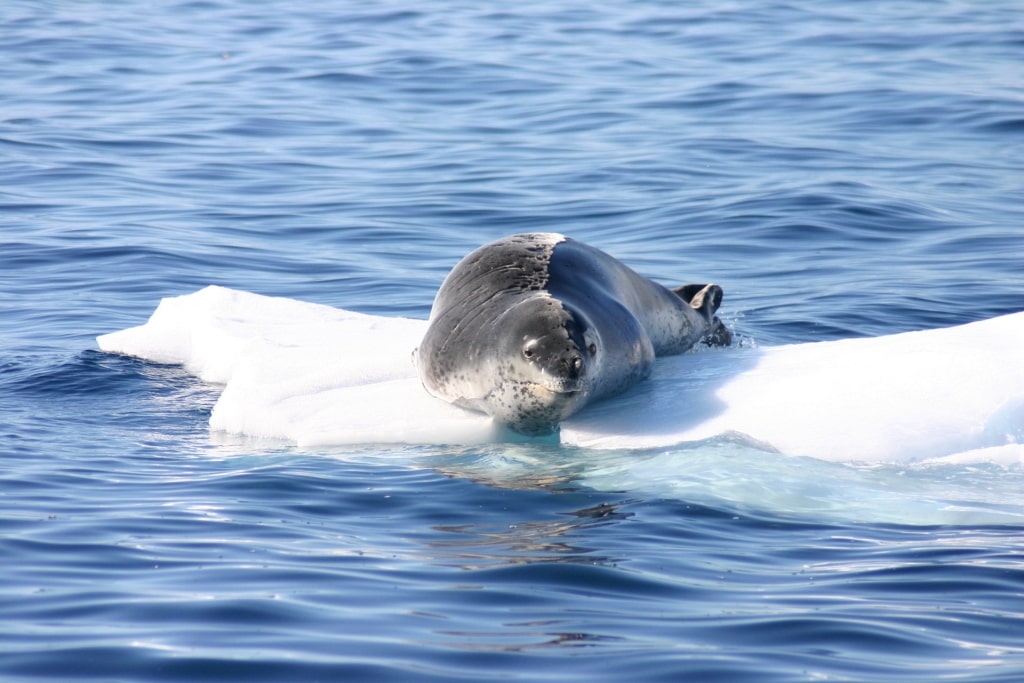
Leopard seal
Leopard seals, speckled grey underneath, spend most of their time in the water, but you might see them basking on the ice. They’ll hunt penguins, but bigger individuals may also take on other seals. If a leopard seal yawns or bares its teeth, take a look if you dare; the fangs are incredibly powerful.
Watch Whales for Hours
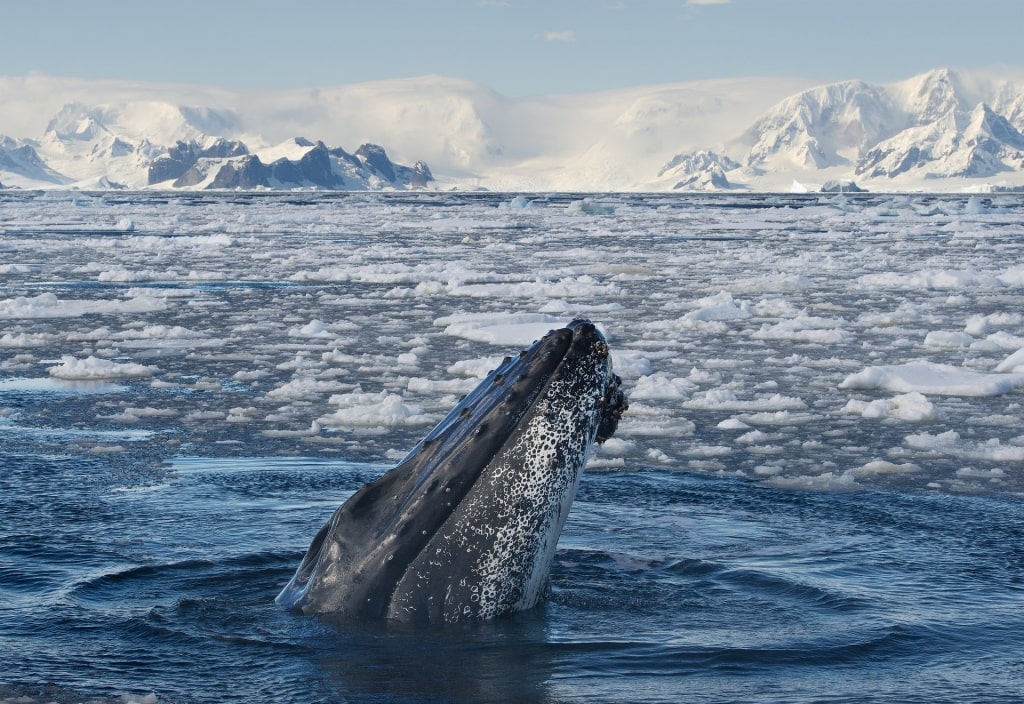
Humpback whale
Spotting your first whale blow when you visit Antarctica is incredibly exciting. There should be plenty of marine mammals, especially in February and March, the best times to go to Antarctica for whale-watching. Whales migrate to Antarctica to feed, and there are several species to look out for in these cold waters.
Humpbacks are the acrobats of the sea. You’ll see them breaching, tail slapping, and spyhopping, or popping out of the water head-first to look at you. The calm, ice-strewn Paradise Bay is a good place to spot these playful animals, as is the dramatic Schollaert Channel.
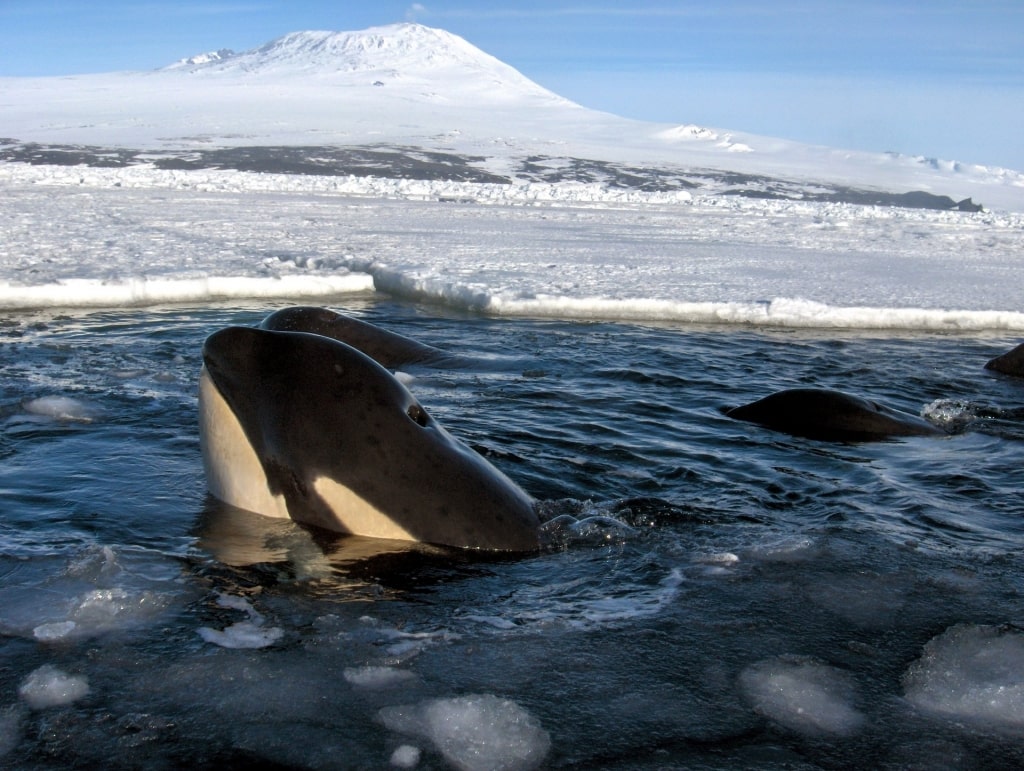
Orca
You might see 10-ton minke whales or bulbous-headed sperm whales. Black-and-white orcas hunt in packs and are fearlessly aggressive. The ultimate prize, though, is to spot the enormous blue whale, the biggest creature ever to inhabit the planet, which is up to 100 feet long.
Read: Best Places to See Orcas in the Wild
Marvel at the Sweeping Landscapes of Patagonia
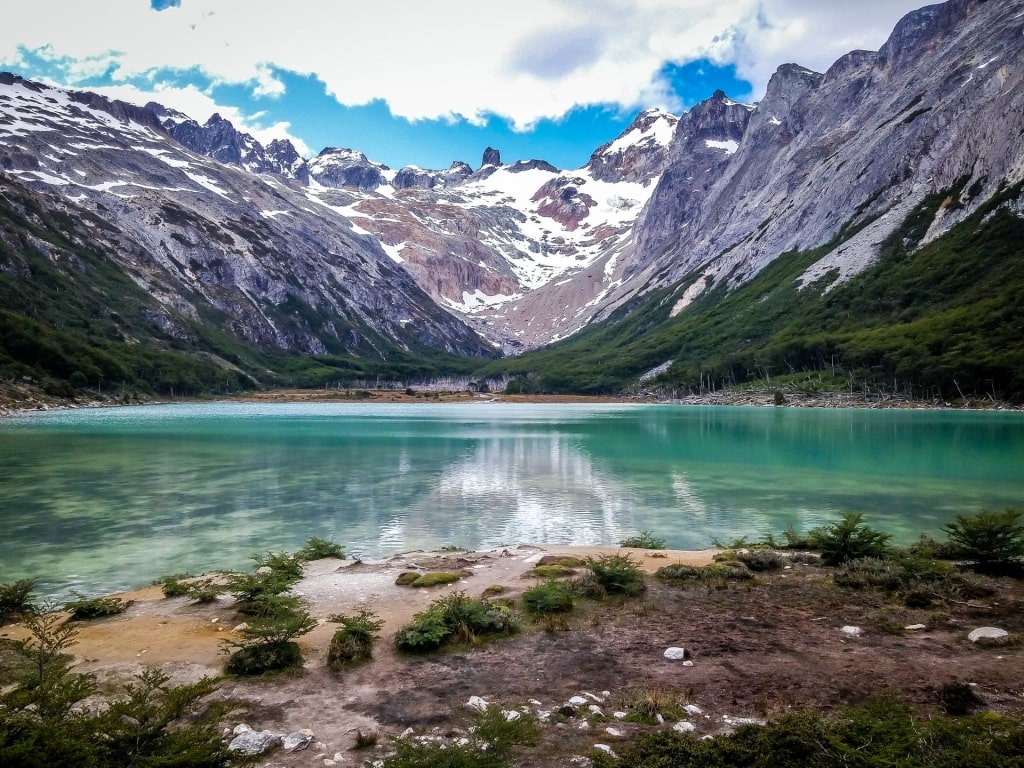
Tierra del Fuego in Ushuaia, Argentina
If you’ve wondered how to visit Antarctica, bear in mind that your journey will most likely begin in wild Patagonia. Exploring Tierra del Fuego, where the southern tip of South America curls around a jigsaw puzzle of forested islands and fjords, is all part of the experience as you acclimatize for your Antarctic expedition.
Ushuaia, the southernmost town in the world, has a real frontier feel, as everybody is here either to hike and climb or waiting for their passage to the White Continent. Consequently, there’s an exciting buzz in the town’s toasty cafés and steakhouses.
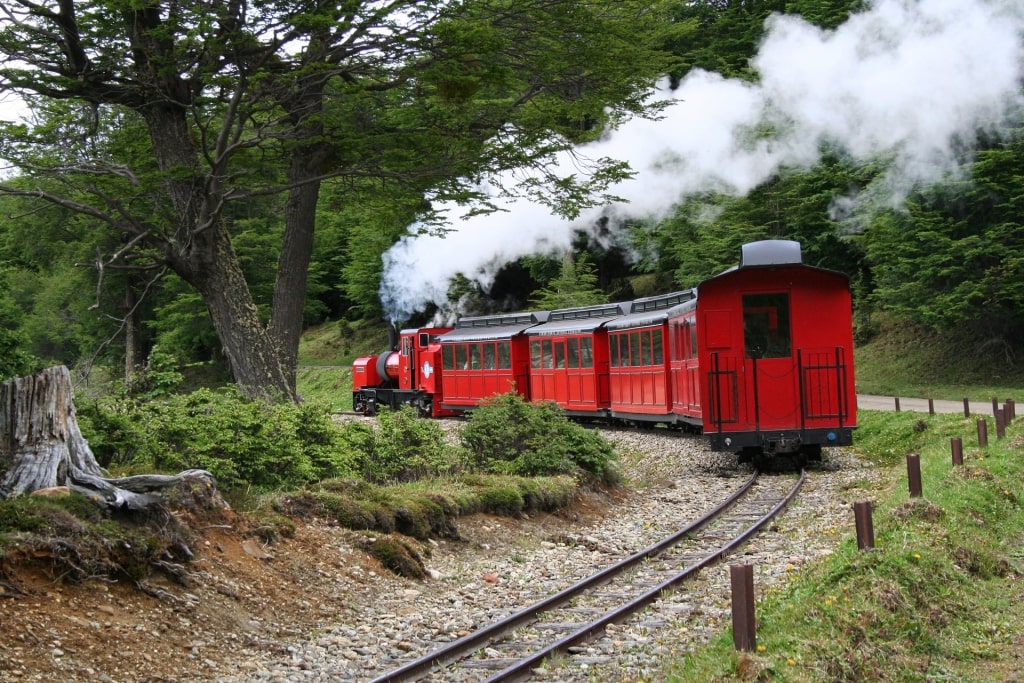
End of the World train in Ushuaia, Argentina
There’s plenty to do here, too. For a taste of the endless Patagonian skies and vast landscapes, ride the Tren del Fin del Mundo, a steam-hauled train that winds its way up into the mountains, following the original route along which prisoners were ferried every day as they collected materials to build the Ushuaia Prison.
Read: Visit Patagonia
Visit the Falkland Islands, Too
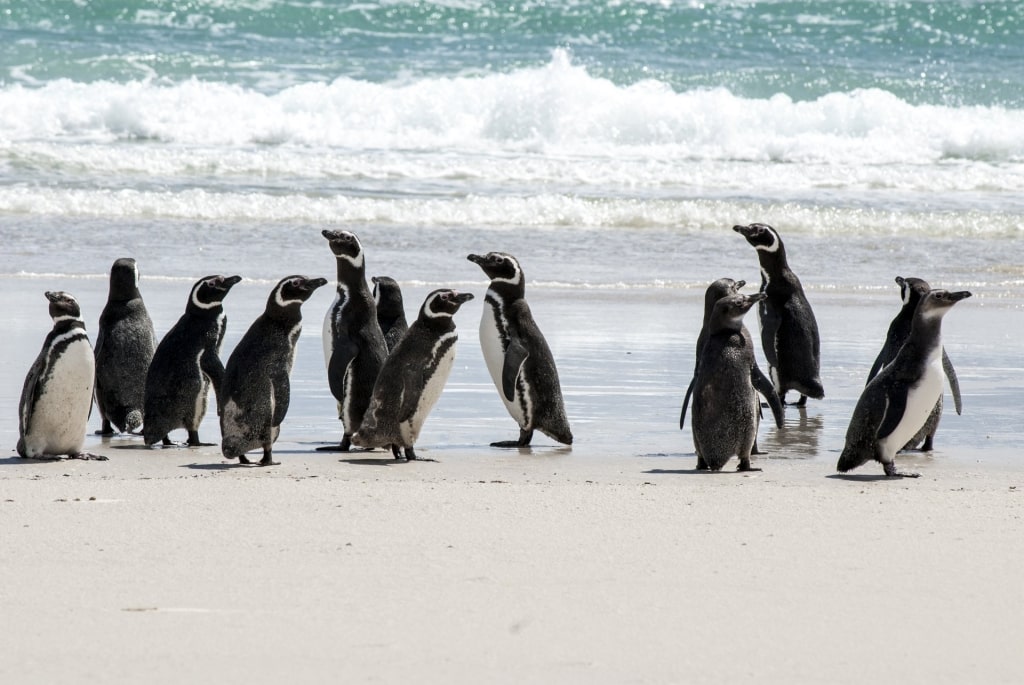
Magellanic penguins in Falkland Islands
Antarctica voyages usually include a visit to the Falkland Islands, a rugged, remote British Overseas Territory off the coast of Argentina. Military history aside, the wildlife of the islands is spectacular, particularly the penguin colonies, and a continuation of what you’ll have seen in Antarctica.
You’ll have the chance to visit a 300-strong colony of Rockhopper penguins. At the privately-owned Bluff Cove Lagoon, take an off-road trip to a pristine beach that’s home to more than 1,000 King, Gentoo, and Magellanic penguins. Sea lions patrol the beach, while dolphins can be seen frolicking in the surf.
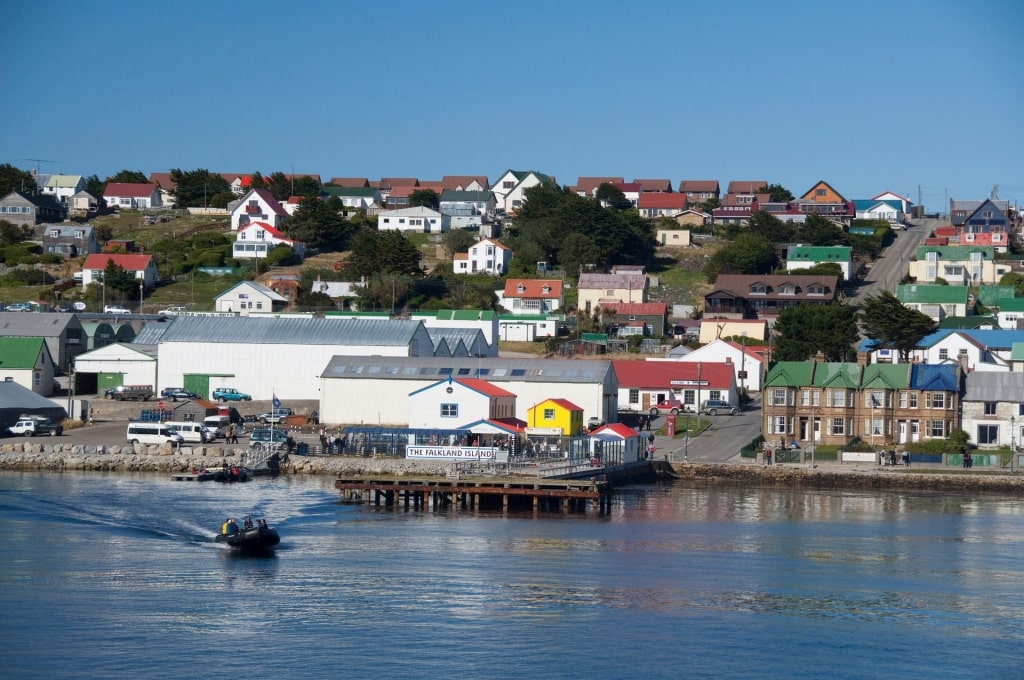
Port Stanley, Falkland Islands
Back in Port Stanley, the sleepy capital, drop into the Historic Docklands Museum to learn about everything from Antarctic exploration to the 1982 conflict with Argentina. Leave time for a pint in the cozy Victory Bar or the Globe Tavern. You’ll feel as though you are in rural Britain, rather than a windswept rock in the South Atlantic.
Follow in the Footsteps of Great Explorers
As you visit Antarctica—admittedly in more comfort than that of the early 20th-century expeditions—you’re following in the footsteps of some of the greatest explorers. Some of them include Ernest Shackleton, Robert Falcon Scott, Roald Amundsen, and Edmund Hillary.
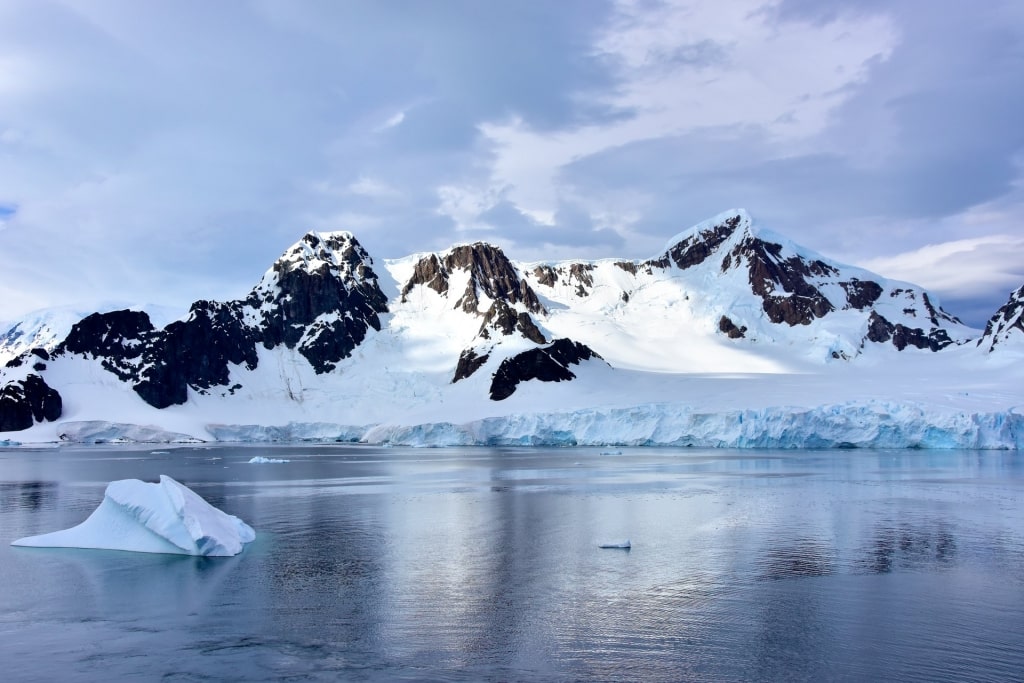
Elephant Island
Imagine how it might have felt, edging through ice-packed channels, to have been here first—and not necessarily at the nicest time of year or with any knowledge that you would return home.
As you sail past the striking but inhospitable Elephant Island, picture the scene in 1916. Shackleton had managed to get three lifeboats and his crew of 28 from the frozen wreck of the Endurance, trapped in the ice of the Weddell Sea, to a stony beach on this rock- and ice-covered speck. Shackleton and five crewmembers braved the passage to South Georgia in a lifeboat to get help, leaving 22 men in this bleak spot for 137 days, with nothing but seals and seabirds for company. All 28 survived.
The Photo Opportunities Are Endless
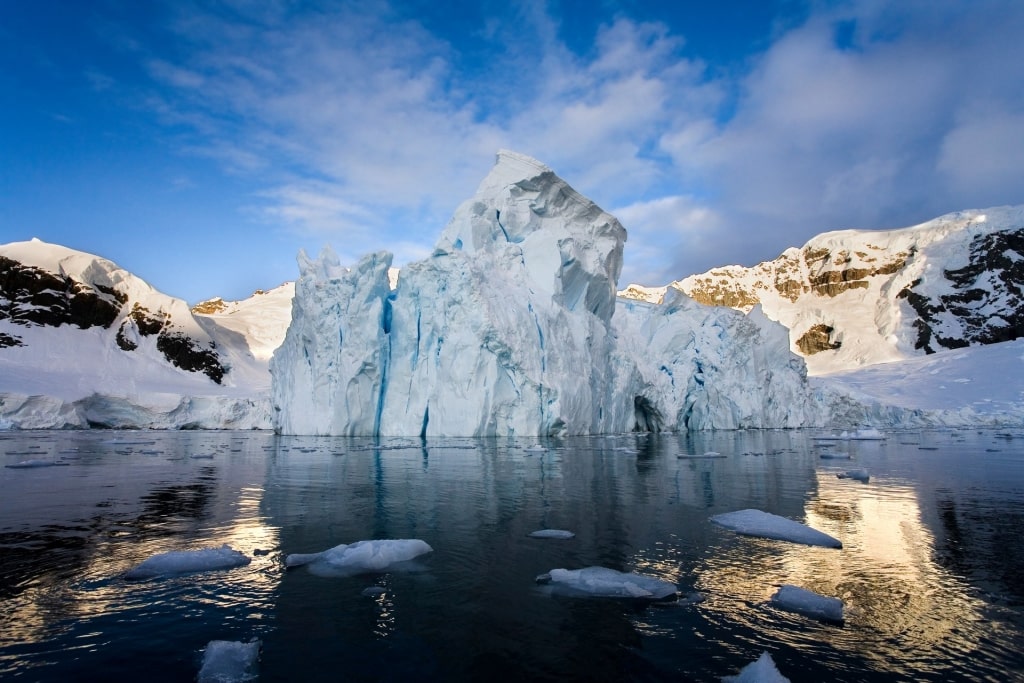
Petzval Glacier
You’ll want a long lens to capture wildlife shots, but even a good cellphone camera will provide you with vivid memories of Antarctica’s majesty. Creating a visual diary isn’t just about seals and penguins.
Snap bizarrely shaped icebergs, and look for reflections in the glassy water. Capture the soft-hued light as the sun skims the horizon. Record birds skimming the waves, ice calving off a glacier, and wind-sculpted ice floes.
Read: Where to See Glaciers in South America
You’ll Always Be an Ambassador
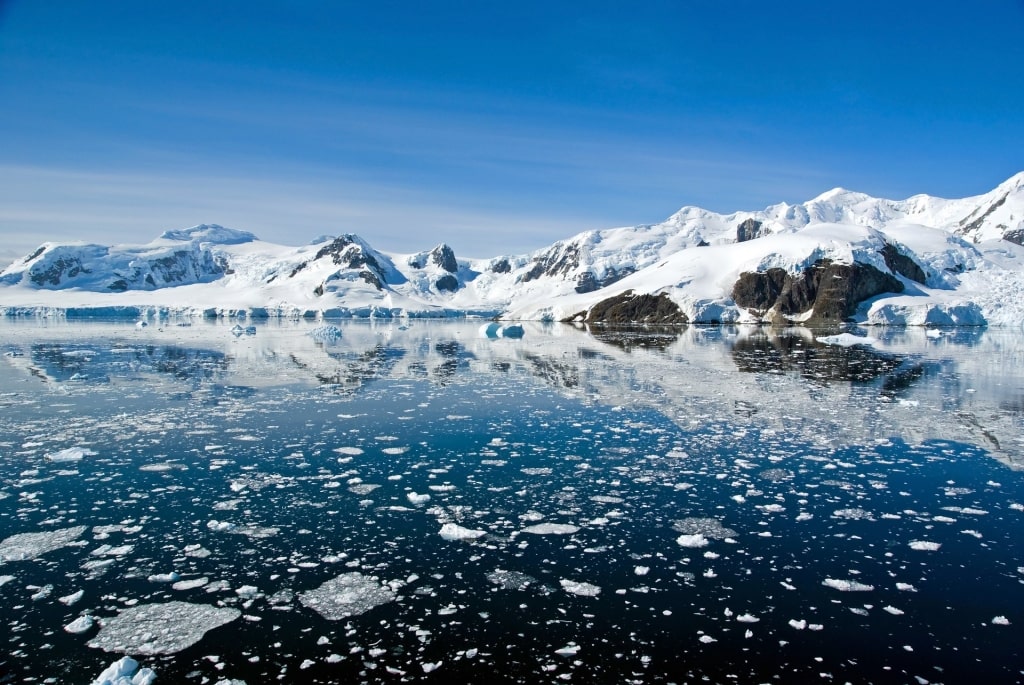
Paradise Bay
Only a fraction of the population of the planet has been to Antarctica. There’s no record here of an indigenous human population. No country owns Antarctica, and no war has ever been fought here.
The fragility of this incredible place is thought-provoking. By visiting, you become part of Antarctica’s history, and everything you see—a particular iceberg, the glitter of a snow-covered slope—will never stay the same. Most visitors quickly realize that to witness nature at its most pristine, and to return home as an ambassador for this starkly beautiful place, is an honor.
Exploring the wonders of Antarctica is easier than you might think. You can discover this untouched paradise on a cruise to Antarctica. Browse cruise itineraries on our website and book your journey to the ends of the Earth.
